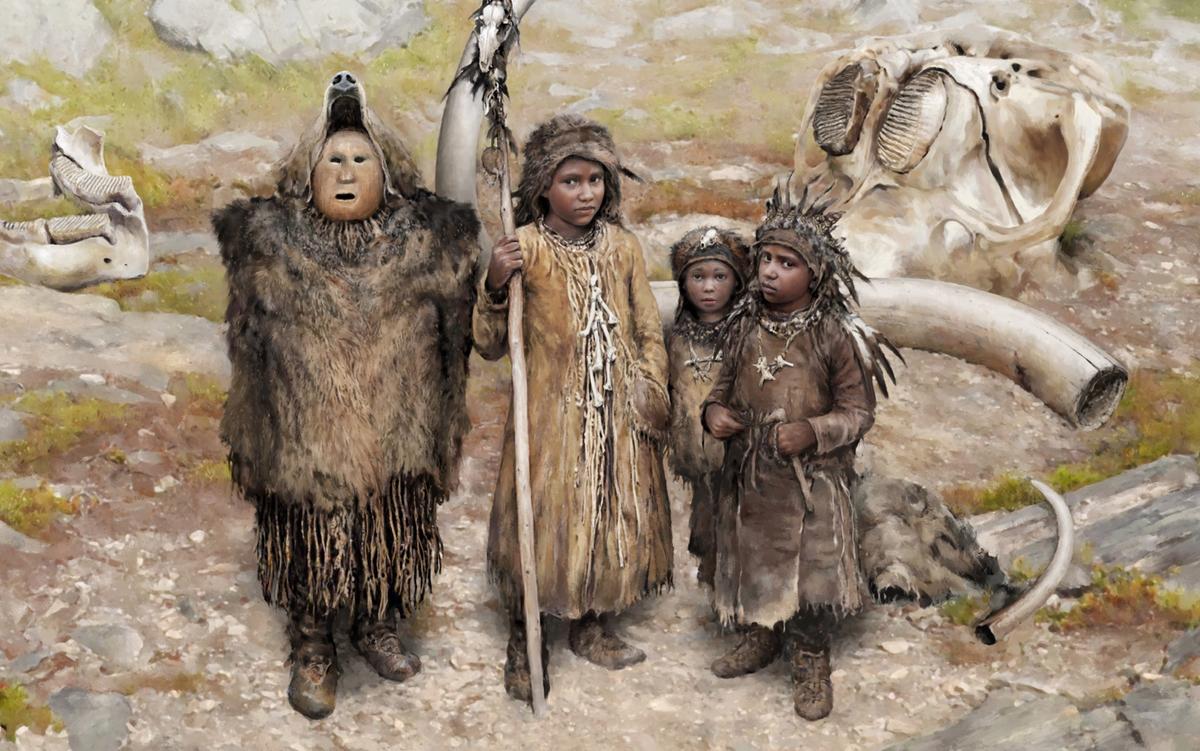Core Concepts
The author explores the daily life of a Palaeolithic family, shedding light on the roles and contributions of children during the last Ice Age.
Abstract
The content delves into a Palaeolithic family's journey into a cave during the last Ice Age, highlighting their activities, interactions, and discoveries. It emphasizes the importance of children in prehistoric societies, challenging traditional assumptions about their roles. The narrative showcases how children contributed to cultural evolution through tasks like tool-making, play, and learning from adults. The study of children in archaeology is presented as crucial for understanding past lifeways and human cultural development.
Customize Summary
Rewrite with AI
Generate Citations
Translate Source
To Another Language
Generate MindMap
from source content
Visit Source
aeon.co
What was it like to grow up in the last Ice Age? | Aeon Essays
Stats
In prehistoric societies, children under 15 accounted for around half of the world’s population.
Close to 50% of remains at Drimolen site were identified as children under 10 years old.
A child buried at Abri de la Madeleine was adorned with hundreds of white shell beads.
Children made significant contributions to stone tool production in Palaeolithic sites.
Adolescents played key roles in adopting innovations and transmitting knowledge.
Quotes
"Children throughout time have often been buried in remote locations or shallow graves without a coffin or grave marker."
"By making stone tools, children provided not only for themselves but for their younger siblings too."
"The lives of these young individuals who lived in the Palaeolithic are all part of a much larger story about how prehistoric children learned about the world."
Key Insights Distilled From
by at aeon.co 02-21-2024
https://aeon.co/essays/what-was-it-like-to-grow-up-in-the-last-ice-age
Deeper Inquiries
How did societal views on children impact archaeological interpretations?
Societal views on children have significantly impacted archaeological interpretations by shaping the way researchers perceive and study evidence related to Ice Age children. In the past, there was a bias towards adult men in archaeological interpretations, leading to a neglect of children in research. This bias began to change with the rise of feminist archaeology and the archaeology of gender, which brought attention to women's roles in the past and subsequently shed light on children as well. However, it is only recently that youngsters have truly emerged from the shadows in archaeological studies.
The assumptions held about children being 'naive' figures 'free of responsibility' have influenced how their contributions to society were perceived in both modern times and prehistory. If researchers assume that children couldn't contribute meaningfully to society, they are less likely to seek evidence that contradicts these assumptions. This has led to challenges in reconstructing past lifeways accurately since a significant portion of available data related to prehistoric populations - where children made up around half or more - was not considered due to these biases.
As archaeologists continue diversifying voices from the past by exploring cultural constructs such as age, gender, sexuality, and identity, more attention is being given to understanding how societal views on childhood influence our interpretation of ancient cultures. By integrating meaningful questions about relationships between adults and children into research efforts, we can gain deeper insights into how young individuals played central roles in contributing to human cultural evolution during the Palaeolithic era.
What challenges do archaeologists face when studying evidence related to Ice Age children?
Archaeologists face several challenges when studying evidence related to Ice Age children due primarily to preservation issues and societal perceptions about childhood.
Preservation Challenges: The fragile nature of child bones compared to adult bones makes them harder for archaeologists to locate within excavation sites. Children's smaller bones are more porous and less mineralized than those of adults, making them susceptible to damage from sedimentary pressure underground or erosion from acidic soil.
Burial Practices: Children throughout history have often been buried without coffins or grave markers in remote locations or shallow graves which can make locating their remains difficult for archaeologists despite potential grief shown through burial practices.
Biases & Assumptions: Modern perceptions about childhood as a time free from responsibilities or significant contributions can lead researchers astray when interpreting evidence related to Ice Age children.Children may be overlooked or misinterpreted if viewed through this lens.
Interpretation Difficulties: Some playful behaviors exhibited by Ice Age children might be seen as random and unpredictable,resulting in some researchers dismissing them as distortions of the archaeological record rather than valuable insights into prehistoric life.
By recognizing these challenges and actively working to overcome them within the field of archaeology,researchers can develop a more comprehensive understanding of Ice Age children and their significant contributions to past cultures and societies.
How can modern perceptions of childhood influence our understanding of prehistoric cultures?
Modern perceptions of childhood play a crucial role in shaping our understanding of prehistoric cultures as they directly impact how we interpret archaeological findings relating to children from that time period.
1 .Bias Confirmation: If modern perceptions view children as passive or unable to contribute meaningfully,to society,this bias can be reflected in interpretations of evidence from prehistory.Researchers might dismiss or minimize the importance of children’s roles based on contemporary beliefs,rather than objectively analyzing the data at hand.
2 .Selective Attention: Our modern viewpoint on childhood as a time free from responsibility can result in an underestimation of the significanceof youthful participation in Palaeolithic societies.If research is not conducted with an open-minded approach towards exploring all potential avenues for study,the true natureof prehistoric cultures,may remain obscured or misrepresented
3 .Cultural Evolution Perspective: Understanding modern perspectives on childhood helps us appreciate that similar social structures existed even during Ice Age times.Children were active participants who contributed positivelyto cultural evolutionthrough playful activities,social learning,and skill development.These aspects must be taken into account when interpreting artefacts,and other remnants from this era,to paint an accurate pictureof life during that time
By critically examining how contemporary attitudes toward childhood shape our analysis_of prehistoric cultures,researchers_can uncover new insights,intothe livesandcontributions_ofIceAgechildren.This holistic approach allows us_to appreciate_the full spectrumofhuman experiences_andbehaviorsacross different historical periods
0
